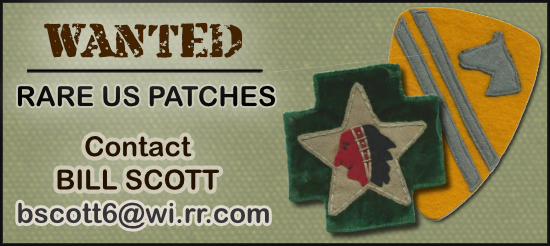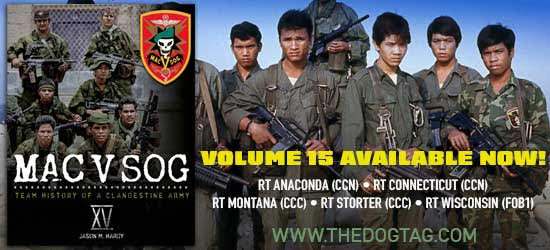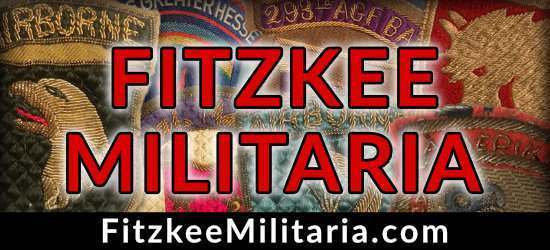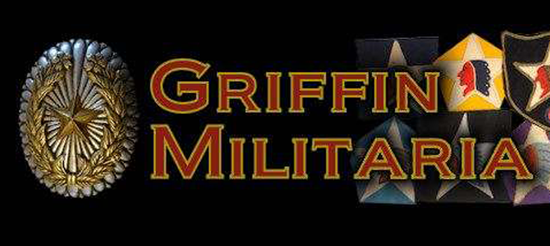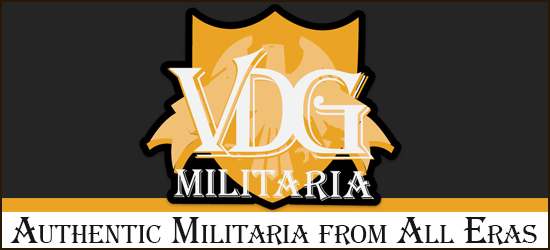-
Donate
Type donation amount in box below.
IMPORTANT! If you donate via PayPal using an e-mail address different than the one you are currently using on USMF and would like a 2024 Donor Icon added to your account, you MUST CONTACT vintageproductions or stratasfan and let them know what email address was used for the donation.
Thank you for supporting USMF.
Donate Sidebar by DevFuse -
Recent Posts
-

By Randy · Posted
These 4 digit units can be fun to research as they were provisional and do not have official histories. Advanced Range Instrumentation Aircraft (ARIA) were developed to support the APOLLO program initially, but they were also used on Defense Department missions. The Air Force Eastern Test Range at Patrick AFB in Florida accepted the first of eight C-135A aircraft for the ARIA program in January 1966. The 6549th Consolidated Aircraft Maintenance Squadron and the 6548th Field Maintenance Squadron (two different units in the same wing) maintained the ARIA at Patrick AFB until the aircraft were transferred to the 4950th Test Wing at Wright-Patterson AFB, Ohio in December 1975. Not sure it they were around before or after, but this gives you an idea. The patch is a Gemsco made one, and fits this time frame perfectly. Randy -

By River Rat 1 · Posted
Some more diagrams on the 1911 and the Springfield 1903 rifle. -
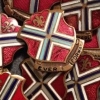
By everforward · Posted
That’s an amazing helmet and story about this officer…indeed the Maryland Regiments of the 29th had a tough time of it getting into Germany, it was a hard-fought campaign. -
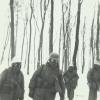
By mysteriousoozlefinch · Posted
Desert Storm DBDU again, for the 142nd Field Artillery Brigade from the Arkansas National Guard. There's no tape, but the name Aubrey Williams was written inside. It also had the yoke cut out at some point. 1983 contract date. -
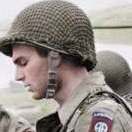
By Gear Fanatic · Posted
Amazing helmet with an amazing study. He had quite the career as well. A shame he passed fairly young. I like it, a top shelf piece for sure. -
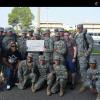
By JerseyDevil117 · Posted
ran into this photo the other day. He was KIA in a scout dog unit but I think the scrolls from a different unit. " Staff Sergeant Alfred Joseph Holtz Jr. Scout Dog Platoon – B Company, 2nd Battalion, 2nd Infantry Regiment, 1st Infantry Division Date of Birth: January 26, 1947 – Date of Sacrifice: July 2, 1968 Hometown: Milwaukee, Wisconsin Tour Began: September 21, 1967 Location of Action: Binh Duong Province, South Vietnam Staff Sergeant Alfred J. Holtz Jr. was more than a soldier—he was a leader known for his fierce devotion to the men he served with. As part of a Scout Dog Platoon in the legendary 1st Infantry Division, “The Big Red One,” Holtz played a critical role in point patrols, ambush detection, and jungle reconnaissance, often relying on the loyalty and instincts of a trained dog to safeguard his unit. Those who knew him remember a sergeant who loved his men—and was deeply loved by them. He carried not just his weapon and gear through the unforgiving terrain of Binh Duong Province, but also the weight of responsibility for those under his care. His courage was steady, his presence calming, even in the face of the unseen dangers that haunted every jungle path. On July 2, 1968, Sergeant Holtz was killed in action by multiple fragmentation wounds during a hostile encounter. His loss was felt not only by his unit, but by the dog who had walked beside him and the soldiers who had followed him without hesitation. At just 21 years old, Alfred Holtz gave everything—not just in service to his country, but in service to his brothers-in-arms. His memory endures in the legacy of the scout dog teams and the soldiers who still speak his name with reverence." -
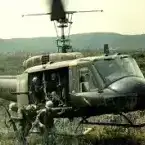
-
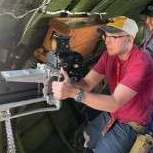
-

By Salvage Sailor · Posted
Brigadier General Arthur Trudeau October, 1947 He is best known for his command of the 7th Infantry Division during the Battle of Pork Chop Hill in the Korean War -
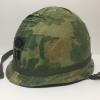
By trenchfoot · Posted
Charles Heckert Norris was born on February 11th, 1915 in Hastings, Nebraska to Walter Norris and Luella Austill. Shortly after his birth, the family moved to Kansas City, Missouri where his father worked as a salesman to pay off the house. Charles attended Southwest High School and then completed four years of college at Kemper Military School in Boonville, Missouri, later becoming an instructor there for four years. With the threat of war looming over the United States, Norris joined the US Army Reserve on May 21st, 1940 with the 408th Infantry Regiment and then was commissioned as a 2nd Lieutenant a month later due to his prior record. After a year stateside, Norris left for Hawaii on July 11th, 1941 and joined Company C, 19th Infantry Regiment at Schofield Barracks, Pearl Harbor, which had already begun planning the defense of the island well before Lt Norris arrived. At the time however, an attack was still deemed unlikely, which would contribute to the island being caught completely by surprise a few months later. Pearl Harbor At 7:48 AM on December 7th, 1941, 353 Japanese planes began their first wave of attack on Pearl Harbor Naval Base. While the torpedo bombers headed towards battleship row, Japanese Zeros strafed Hickam and Wheeler Field, destroying a large majority of the American fighter planes parked on the runway that could have been mobilized to fight the Japanese in the air. Awoken by the sudden explosions, Lt Norris and the rest of the 24th and 25th Infantry Divisions stationed at the nearby Schofield Barracks scrambled out of their bunks, grabbing whatever weapons were available to try and defend their camp. After finishing their run on the airstrips, the Zeros turned their attention to Schofield Barracks, strafing the camp multiple times, wounding twenty eight and killing three. However, as they flew low over the barracks, they were met with a hail of machine gun, rifle, and pistol fire from the enraged US Army soldiers on the ground, which may have accounted for two of the Japanese fighter planes downed that day. After ninety minutes of chaos, the surprise attack on Pearl Harbor was over, leaving a total of 2,335 American servicemen killed and over 1,000 wounded. One day later, President Franklin Roosevelt formally declared war on Japan and the Axis powers, plunging the United States into WW2. In the aftermath of the attack, Lieutenant Norris’s 19th Infantry Regiment and the rest of the 24th Infantry Division were charged with the defense of the northern half of Oahu in case of yet another attack. Over the next year, they built elaborate coastal defenses such as beach fortifications and laid thousands of yards of barbed wire on the beaches. After a year of work and a promotion to 1st Lieutenant, Norris left Hawaii on February 28th, 1943 and joined Headquarters, 3rd Battalion, 222nd Infantry Regiment upon its activation in June. This regiment trained extensively at Camp Gruber for service in the ETO with the 42nd Infantry Division, but the Army had other plans for LT Norris. In early 1944, he attended Fort Benning’s Officer Advanced Course, was promoted to Captain on June 13th, and joined a replacement draft bound for France four days later. Into France Captain Norris arrived in France on September 1st and became the replacement commander of Company I, 175th Infantry Regiment, 29th Division as they were locked in the Battle of Brest. The Germans had turned the city into an intricately defended fortress of 30,000 men, and while some regular units fell quickly, the elite German paratroopers did not give up easily. Brutal fighting ensued over the next week, leading into the town and necessitating house to house battles, but Brest fell on the 20th. Captain Norris transferred to command Company K, but the Germans had taken a considerable amount of experienced men away from the regiment, and constant combat was wearing down on Norris as they kept pushing into Europe. This got worse during the Battle for Aachen. Aachen The 29th Infantry Division was located on the flank of the assaulting force driving into the town, but they kept up diversionary attacks against the Germans. On October 1st, “[Norris] became jittery, shaking and alarm reactions to sound, and fear of darkness due to his poor vision at night.”By the 4th, the Americans had lost 1,800 men to combat, and Norris’ condition worsened after he was knocked out by a blast concussion the day before. His breaking point came on October 5th. “[He] was in combat with his company and because of what he felt were improper orders from his CO, he disadvantageously attacked [the enemy at 3:00 AM] and about 75% of his company was wiped out.” Norris suffered a gunshot wound to his left hand’s 4th finger and was evacuated from the line. Recovery Captain Norris was treated for his injuries at a field hospital behind the lines. While his physical recovery was going well, his psychological state deteriorated as he was moved away from the front. “After going to the hospital, his nervous systems became more and more severe, particularly because of his guilt feelings for the loss of his men. He has vivid battle dreams where he continues to re-fight each battle trying to…avoid losing his men.” Hospital staff deemed it necessary to send him back to the US in February 1945 where he took on an administrative job with common check ups at the base hospitals where he showed improvement. Later Life After WW2 came to a close, Norris eventually returned to a teaching role in 1947 with the Wentworth Military Academy in Lexington as assistant PM&T, along with running the ROTC summer camp. At the end of 1949 however, he headed back overseas as Assistant Legislative Liaison Officer, HQ Supreme Command, Far East in Japan to his former enemy. The group advised the rebuilding country for political and relationship means between the two countries. Norris was highly commended for his service here and was promoted to Major in 1951, eventually leaving in February 1953 to become an English instructor at West Point. Sadly, while a faculty member here, Major Norris was admitted to their hospital after fainting at work, passing away from bilateral bronchopneumonia three days later on November 23rd, 1953. His death was associated with heavy drinking habits that plagued him for years prior, likely a byproduct of his trauma from combat. Charles is buried at the USMA Post Cemetery.
-
-
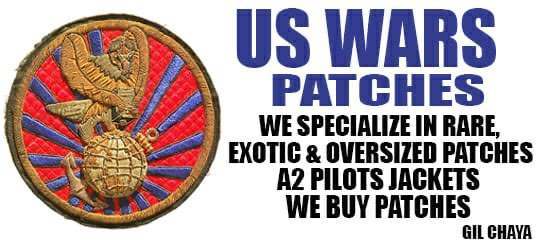
-
* While this forum is partially supported by our advertisers, we make no claim nor endorsement of authenticity of the products which these advertisers sell. If you have an issue with any advertiser, please take it up with them and not with the owner or staff of this forum.




